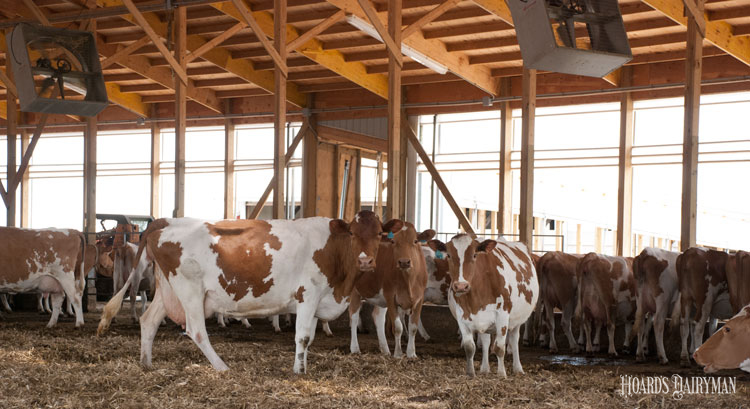
Summer will soon arrive, and our cows will be feeling the heat.
According to Nigel Cook, MRCVS, cows are becoming impacted by heat stress at lower and lower temperatures. That, coupled with larger facilities and more opportunities for “wind shadows” (areas where airflow is blocked), creates an environment where a cow is at higher risk for heat stress.
Cook, a professor with the University of Wisconsin School of Veterinary Medicine, spoke at the Professional Dairy Producers of Wisconsin (PDPW) Business Conference held in Madison, Wis. He explained that every time a cow lies down, it accumulates body heat, at a rate of about one degree per hour. When the cow stands up, its body temperature lowers. Therefore, cows cool when they stand and warm when they lie down.
“Of all the things I talk about (in regard to dairy facilities) — including surface cushion, stall design, and time budgets — nothing has as big of an impact as heat stress,” said Cook. He referred to a study conducted on Wisconsin farms, where THI (Temperature Humidity Index) and lying time were tracked. THI rose from 67 to 79 over the period of six days. Lying time, which started at 10 hours per day, fell to six hours per day over that short time period.
“Heat is a killer for our cows,” Cook said. “Losing four hours of rest per day within a few days is punishing.”
To deal with the rate of heat accumulation while a cow is lying down and to facilitate the transfer of heat out of the barn, Cook gave these three recommendations:
- Maximize fast moving air in the resting space.
- Provide sufficient air changes per hour to remove heat and moisture from the barn.
- Design a system that works as well in the summer as it does in the winter.








